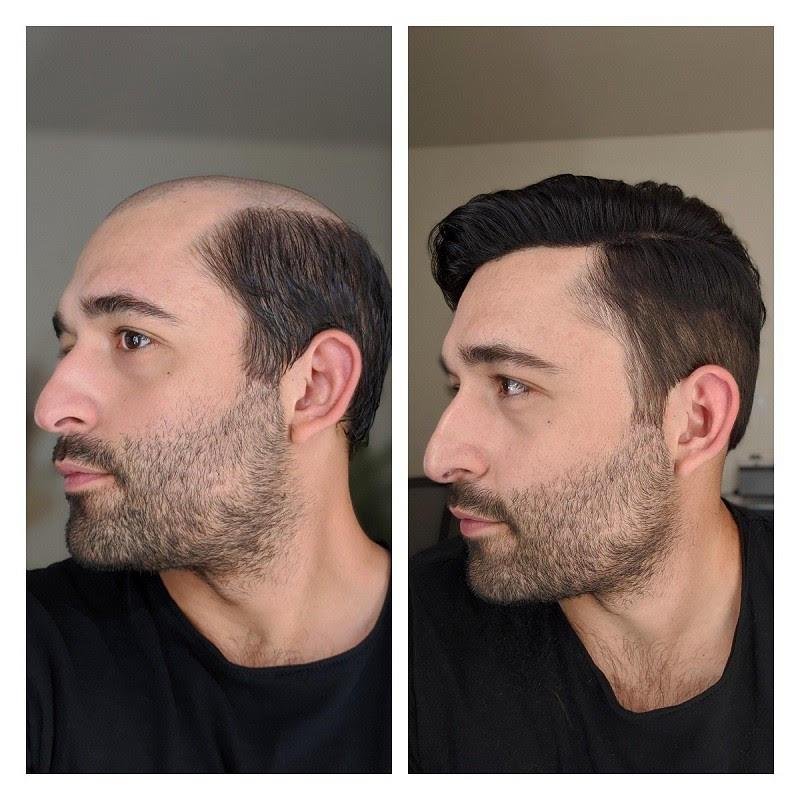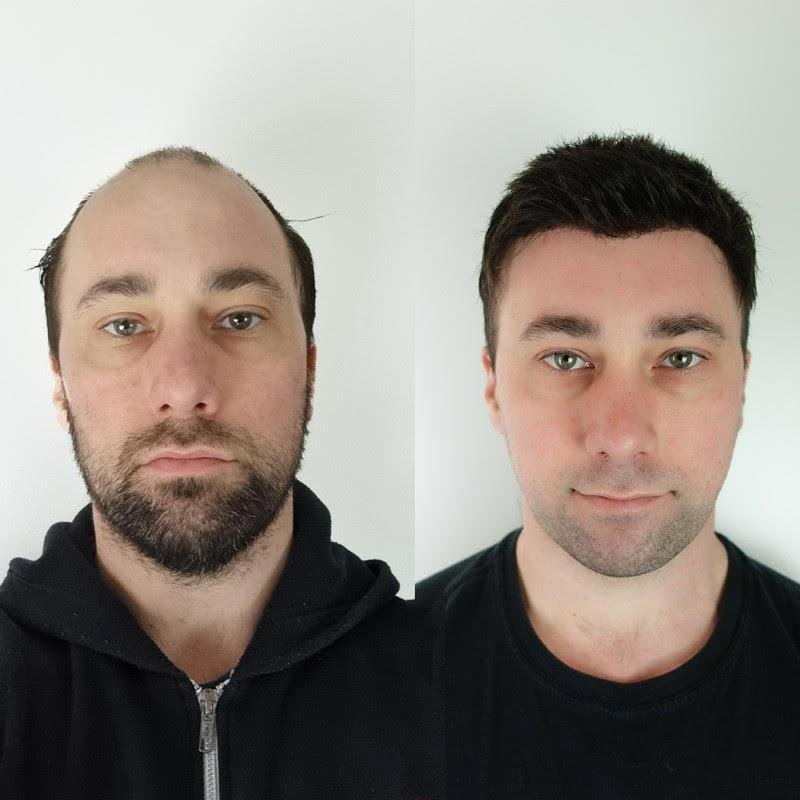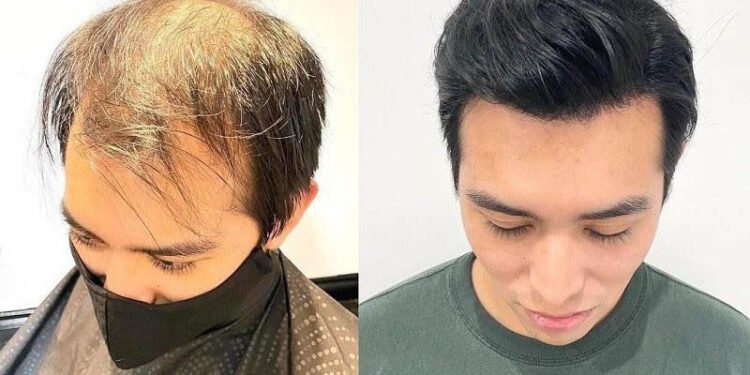With the vast array of hair replacement solutions now available for both men and women suffering from thinning hair or balding, selecting the optimal hair system that appears convincingly natural-looking and feels comfortable can prove highly challenging.
This comprehensive guide covers the full range of critical factors hair loss sufferers must weigh when choosing integrated hair systems – from hair fiber types, advanced base materials, proven integration techniques, and customization approaches to density considerations, provider vetting, lifestyle factors, and the importance of seeking guidance from specialists. Careful evaluation of all aspects leads to excellently customized and integrated systems capable of undetectable, confidence-restoring results.
First Assessing Your Specific Hair Loss Situation and Goals
The ideal solutions depend heavily on accurately diagnosing the specific degree, pattern, and extent of your individual hair loss and thinning. Different stages warrant different solutions. Defining realistic goals is also key.
Early Stage Minor Thinning
If hair loss is still relatively minor and mild, with adequate density remaining across most of the scalp, more concealed and non-integrated solutions may suffice such as cosmetic fibers or scalp micropigmentation rather than full hair systems.
Advancing Moderate Hair Loss
For cases of moderate but progressively advancing thinning, partial hair systems strategically customized for integrating into remaining bio hair using ultra-thin skin imitation bases expertly blended into zones of remaining strands tend to provide ideal naturalness and gradual progression.
Advanced to Severe Hair Loss
Individuals dealing with more advanced recession of front hairline or extensive loss toward the crown and vertex will benefit most from full hair systems topped with intricate integration work applied through skilled precision bonding and tying methods to maximize disguise.
Understand Your Hair Goals
Being realistic and honest with specialists about what degree of restoration is realistically achievable for your degree and pattern of loss is crucial to avoiding unrealistic expectations. During consultations, seek their expert guidance on which solutions can reasonably enhance your appearance based on your exact hair loss situation and lifestyle.

Comparing Human Hair vs Synthetic Hair Fibers
The choice between human versus synthetic hair used in the system fibers directly influences the movement, feel, maintenance needs, and longevity.
Potential Benefits of Synthetic Hair
Synthetic fiber locks made from polymers tend to have lower initial costs and limited required maintenance regimens. Quality synthetics emulate some properties of real hair like sheen, bounce, and the ability to accept heat styling. Easy care makes them popular.
Natural Benefits of Human Hair
For the most seamless day-to-day natural look and minimal detectability, prime remy quality human hair remains the gold standard. The innate soft, smooth texture and biological cuticle structure make real human hair move, fall, part, reflect light, and integrate precisely like live hair growing from one’s scalp.
Blended Hair Fiber Options
Some hair systems artfully combine synthetic hair along the sides or interior zones mainly for cost efficiency, while concentrating premium human hair fibers selectively at the top or front hairline where visibility is highest. This optimized blend allows balancing the benefits of both fiber types strategically.
Advanced Hair System Base Materials
The cap or base foundation material to which hairs are ventilated is crucial, as it anchors the integrated system and influences overall comfort, breathability, and undetectable integration quality.
Intricate Hand-Knotted Lace Bases
These extremely delicate bases use fine Swiss or French lace made from intricate hand-woven or machine-knotted patterns with deliberately integrated holes that form a transparent, breathable mesh. When custom colored, the intricate lace appears blended into the scalp for imperceptible integration. Lace is very fragile yet natural.
Lightweight Monofilament Mesh
Monofilament mesh refers to an ultra-fine, gauze-like mesh base made from thousands of tiny single synthetic filaments woven together while leaving microscopic perforations between the crossing filament hairs. This base design allows the grafted hairs to emerge through the skin-like pores in a perfectly random natural pattern. Monofilament is also highly breathable and comfortable when fitted correctly to the contours of the scalp. However, it is prone to tearing if handled roughly.

Thin Flexible Polyurethane Skin
This base uses an advanced thin polyurethane film or skin custom fabricated to precisely adhere and flexibly contour along the unique shapes and dimensions of an individual’s scalp for a customized fit. Polyurethane closely mimics the translucency, texture, and breathability of actual dynamic skin for exceptionally seamless integration. The material is relatively durable yet virtually undetectable.
Base Material Combinations
Some highly advanced hair systems use different materials strategically in ideal zones to balance strengths – such as hand-tied lace fronts or monofilament mesh concentrated on the top, while defaulting to durable yet undetectable polyurethane on the sides and back where visibility is lower. This hybrid approach optimizes naturalness yet longevity.
Hair System Integration Techniques for Security and Naturalness
The methodology used to technically integrate the hair system amid existing native hair is monumental in determining the resulting security and hold throughout daily life, the ease of maintenance, and achieving maximally gradual natural transitions between integrated and biological hair for undetectable blending.
Strand-by-Strand Bonding and Mini-Links
Precision bonding which uses medical-grade adhesive glues uniquely formulated for skin and hair to securely adhere the hair system strands directly to any remaining native hair follicles a few strands at a time facilitates the most gradual, untraceable transition between integration and bio hair. Mini-links act similarly. The dedication achieves durable all-day hold.
Non-Adhesive Friction Attachment Methods
Some systems instead attach via non-adhesive methods like skin-safe toupee clips or tapes with microscopic velcro-like hooks to anchor sections cumulatively. While avoiding adhesives, these friction hold methods make hair maintenance easier with overnight removability. But they intrinsically provide less reliable stability than precision bonding, especially with activity.
Partial Hair System Integration Strategies
Small discrete partial hair systems designed for adding thickness just at high-visibility areas like the crown, temples, or hairline demand minimal integration yet provide limited coverage. This conservative integration approach requires less commitment but sacrifices fuller restoration.
Advanced Suction Technology
Newly emerging hair systems engineered for fully shaved heads employ powerful vacuum suction technology to firmly seal the interior integration base directly to the scalp. While adhesive-free, ultra-smooth scalp skin is required for efficacy. Overall, suction enables good hold yet requires diligent head shaving.

Stock Hair Systems vs Customization for Ideal Natural Hairstyles
The level of personalization and customization involved in designing and fabricating the integration system also significantly influences how seamlessly, naturally, and undetectably the final hairpiece integrates with surrounding features.
Potential Benefits of Stock Hair Systems
Standardized stock hair systems mass-produced in common sizes and styles to fit a generalized head template offer more limited personalization but provide a budget-friendly starting point solution with little wait time for delivery. Off-the-shelf simplicity meets some basic needs.
Multiple Advantages of Meticulously Customized Hair Systems
In contrast, personalized custom hair systems with bases, hairlines, density patterns, and even hair knots all meticulously customized and ventilated based on the individual’s highly specific head and facial geometry, hair loss patterns, and remaining natural hair characteristics enable the most discretely integrated result that appears uncannily natural for the individual. The precision disguise is unmatched.
Potentially Trying Both for Comparison
Pragmatically, it often makes sense to try an entry-level prefabricated stock hairpiece first to get one’s feet wet while better understanding needs from real-world wear. Then order a high-end fully customized human hair system afterwards if disappointed by the generic off-the-shelf fit and blending. This helps educate preferences.
Hair Counts, Density, Volume – Getting it Right
The volume of integrated hair must strike a delicate balance between adequate density for visually pleasing fullness yet conservative realism avoiding any detectability of unacceptable thickness and plugginess.
Seeking Only Conservative Density Boosting
If an individual still retains adequate reserves of natural hair overall across the scalp, it is often best to conservatively integrate only partial density designed to provide a subtle lift and increase fullness while remaining completely undetectable as artificial augmentation versus heavily boosted volume.
Gradual Diffusion Along Outer Perimeters
It is vital that the hair system designer artfully gradate hair follicular density near inherently sparse outer perimeters along the frontal hairline and temple peaks, where abrupt transitions could be conspicuous. Intricately adding finer wispier groups of just a few hairs at the leading edges prevents a visibly solid wall of hair that contradicts natural recession.
Concentrating Volume Within Existing Margins
For optimal concealment, fuller density hair bundles should be concentrated amid zones still retaining some original bio hair rather than expanding drastically beyond the original hair area margins. This respectful nesting helps avoid an artificial blocky appearance.
Anticipating Future Loss Progression
When estimating an ideal current hair system density and volume for a natural balanced appearance, it is also prudent to respectfully anticipate potential further thinning and loss progression over the intended lifespan of a system. This avoids integrating overly ambitious densities that may later conspicuously exceed surrounding hair as native hair continues receding. Aim for cautious restraint.
Diligently Vetting Hair System Providers Through Reviews and Consultations
Vetting potential hair system designers, manufacturers, and technicians through extensive reviews, transparent conversations, examining actual samples, and initial consultations is indispensable for finding an optimal genuine provider suited to deliver natural results.
Rigorously Inspect Example Hair Systems In Person
While website photos may exaggerate quality from selective angles, it is vital to inspect actual hair system samples up very close and from all directions to scrutinize fine details of hairlines, venting knots, and density. Photos often hide flaws.

Schedule Thorough Consultations with Practitioners
Take time to schedule open, honest consultations with practitioners from any prospect company to discuss your needs and concerns candidly. Assess how well they listen and their degree of transparency about options and pricing. Their priority should be your satisfaction.
Verify Credible Reviews from Local Clients
Look beyond promotional testimonials on company websites. Vet Google and Yelp reviews specifically from real local clients in your area to help gauge real-world results and client experiences working with the provider. This lends third party credibility.
Carefully Compare Pricing and Component Quality
When comparing pricing from different companies, weigh costs appropriately against components used and proven integration quality skill. Remember that very cheap deals likely cut concerning corners with low-grade hair and materials that will sacrifice believable naturalness. Find the ideal balance of quality and affordability.
Conclusion: Careful Deliberation Leads to Ideal Restorative Solutions
In closing, thoroughly weighing all the interdependent factors of needs, materials, methods, customization, density, lifestyle, and providers allows making fully optimized hair replacement decisions unique to your individual circumstances. While challenging, choosing the ideal combinations mindfully leads to excellently customized and integrated hair systems capable of restoring lost hair in a dramatic yet imperceptibly natural manner.












